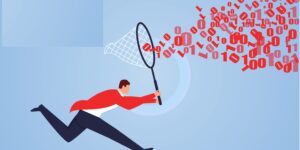During a recent webinar, an insurance company representative imagined the thought process of potential plaintiffs who might consider calling a lawyer.
Bombarded by television advertisements from law firms multiple times each day, the viewer thinks, “It wouldn’t hurt to just make the call.”
No doubt, this is a scenario that plays out for PFAS, Camp LeJeune, asbestos, hernia mesh, and a growing list of mass torts that ultimately impact the profits of insurance companies paying for defense and settlement.
But let me paint a different picture, taken from real life. This one, perhaps, gives some glimpse into the rising effects of “social inflation” being felt by personal auto insurers.
Instead of someone sitting home watching TV, imagine you’re a very fit and active recently retired woman. Now that you don’t have to drive to your job every morning, you wake up early every day and take a walk to stay in great shape.
On one unseasonably warm morning in February, your walk ends with a trip to the emergency room. You don’t actually know how you got there, but some people on the medical team talking around you are saying something about a car accident.
“Hey, I’m in the hospital. I think I got hit by a car when I was out on a walk,” you type in a text to your family members when the effects of a concussion wear off enough for you to gain some sense of what’s going on.
The only real evidence you have of the event is a piece of paper someone left with your belongings, which a nurse mentions in passing to the relative you texted as you’re being dismissed from the ER with stitches in your head, a cast on your broken wrist and pains in your back that are making it hard for you to straighten up or walk at your normal pace. You also have a small Post-it note with a number to call to provide your medical insurance information to the hospital, since they had your pre-retirement plan from your employer on file. And some hospital dismissal papers provide a list of doctors to call for follow-up on those stitches and that wrist. The instructions also note that you shouldn’t tax your brain because of the concussion.
As you talk to friends and family in the days that follow, there’s a lot of confusing information about which insurer will be the primary payer of your medical bills. There’s talk about auto no-fault insurance, auto medical payments, health insurance. In your state, no-fault covers pedestrians. Some medical providers say they need no-fault claim numbers. Your usual doctor says she doesn’t take no-fault cases.
“No-fault insurance? True, it wasn’t my fault. But I wasn’t in a car,” you think. “Should I call my insurer anyway? The insurer of the driver that hit me?“
You do have a driver name and her insurance company on that piece of paper tucked in your belongings but no phone number to reach them. And you still don’t have the actual accident report, which that first piece of paper says could take two weeks to show up online. You don’t have any idea what happened.
“Don’t tax my brain? This is all pretty taxing.”
When you search online, the only official information about no-fault claims from the insurance department in your state says, “You should file your claim with the insurance company which covers the car in which you were an occupant (either as passenger or driver) or, if you were a pedestrian, with the car that struck you.”
“The car that struck me? What does that mean?”
More often, you find seemingly more helpful information on the websites of law firms. “No-fault is primary to your health insurance, which means it pays first in the event injury is due to an auto accident,” says one. “After a pedestrian accident, you can file a claim with your PIP provider. Your no-fault insurance provider should pay the medical bills from the pedestrian accident. However, if you do not have PIP coverage, you might be able to get reimbursement for medical bills if a family member in your household has a PIP policy,” says another.
A third one says, “When a pedestrian is struck by a motor vehicle, no-fault insurance will pay for their medical bills and lost wages up to a certain amount, regardless of who was at fault for the accident. Notably, a pedestrian’s own PIP coverage would apply first, even though they were not in a vehicle.”
“If they do not own a vehicle—and thus, they do not have PIP coverage—an injured pedestrian can make a claim with the insurance company of a member of their household. If neither option is possible, the PIP insurance of the driver who struck the pedestrian should cover their medical expenses.”
“Sometimes, it may be necessary to file a claim through the Motor Vehicle Accident Indemnification Corporation (MVAIC). This can arise in cases where no-fault coverage is not available through any of the above avenues and one of the following circumstances apply…”
Long list of circumstances follows.
Your head is spinning now: “I can’t read anymore. This is too complicated and I’m still recovering.”
In the days and weeks that follow, the stiffness gets worse. Ten days later, the stitches come out and a bone doctor examines your wrist. You feel better about that. But as you go to medical providers, they request credit card payments upfront. That’s not good. And now your knee hurts and one doctor says that it could be a torn meniscus. (“Surgery?“)
At the advice of a relative who has worked in the insurance industry, and an insurance expert she called on your behalf, you contact your insurance company (a direct writer). You do have car insurance even though you weren’t driving. The company sends a form asking questions that don’t make sense—like whether you are a member of a household of the pedestrian. (“Didn’t I read that somewhere before?“) And the insurance company representative says, “We’re probably going to deny this claim” before you even send back the completed paperwork.
More friends hear about your plight. “Here’s the name and number of my lawyer,” they say.
“Why do I need a lawyer? I don’t want to sue anyone. I don’t even know what happened. I just want someone to pay my bills,” you think.
Still not sleeping. Back feels worse. And now your leg is bothering you. Worries about those medical bills are weighing on you, too.
It’s been more than three weeks since the accident.
“Maybe I should call that lawyer.”
The accident report finally shows up. And the driver’s insurance company is calling your mobile phone as you’re pulling into the parking lot of the law firm.
Your friend’s lawyer sits in on the meeting where others “more familiar with these no-fault cases” share their knowledge. They’ll handle dealing with the driver’s insurance company. But they give you phone numbers of physical therapists and talk to you about some court date in the future.
“Did I have to do all this? Why did this have to happen to me?”
Even if it wasn’t their responsibility to handle the claim, why couldn’t someone at my own auto insurance company explain to me what I should do, or how I should have my bills handled?
OK, I’ll confess, the real-life person involved didn’t say or even think that last part. I did.
Even when their companies won’t pay the bills, for whatever reason, one role that claims professionals play is holding the hands of accident and disaster victims in their times of need (along with insurance agents of agency carriers).
Personal auto companies are cutting costs, laying off claims professionals, investing in AI to handle claims. Are those the right investments?
It’s probably a stretch, but if insurance companies were more helpful than lawyers in pointing injured people in the right direction—to just get their bills paid and set their minds at ease—then the inflationary effects on personal auto insurance claims across the industry might diminish.
Too far-fetched? Idealistic? Maybe. Still, too often I’m writing the words of insurance company executives, defense lawyers and insurance analysts talking about the investments and litigation funding that the plaintiffs’ bar is using to hone their well-oiled machines, fueling mega-verdicts in tort cases. Today, I wanted my readers to refocus instead on those victims that reluctantly seek the services of lawyers because they have no one else to help them—ultimately inflating even non-catastrophic personal auto and pedestrian accident claims for the industry overall.





















 AM Best: Tariff Uncertainty Could Lead to Credit Rating Changes for Insurers
AM Best: Tariff Uncertainty Could Lead to Credit Rating Changes for Insurers  Allstate: How Can You Save on Auto Insurance?
Allstate: How Can You Save on Auto Insurance?  2024 Second on Record for Most Tornadoes in the U.S. in a Year
2024 Second on Record for Most Tornadoes in the U.S. in a Year  The Future of the Insurance Customer Experience Is Unity, Personalization
The Future of the Insurance Customer Experience Is Unity, Personalization 









